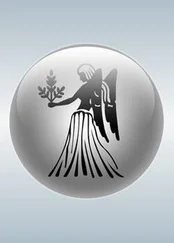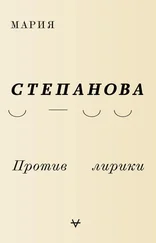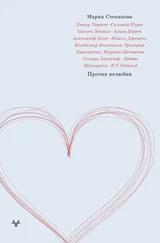Woodman titled one of her photographs a portrait of “legs — and time” in her journal. She wrote of the objects featured in a late series of works, which went into her artist book before her death (the photographs are pasted on the pages of an old geometry primer, be fire with fire , I suppose, the new order prevailing over the old): “These things arrived from my grandmother’s they make me think about where I fit in the odd geometry of time.” The geometry of time is indivisible from its texture, which is constantly transforming itself, crumbling, breaking apart, evaporating, and then reforming in the vapor, ruled by the laws of the organic world. The phrase “body of work” takes on a living, almost medical sense: these photographs register the body of the world as a physical entity, with its pile, its skin, the dirt that eats into the pores, its twitching extremities, its ceaselessly shifting surfaces.
The eroticism of the images takes us a long way from the straight and narrow of human desire; it’s the crushed white fabric, barely touched by the sun, that seeks a meeting/illumination, far more than the bare shoulder of a woman does. Woodman’s interiors and landscapes are filled with naked bodies, bride-white Wilis trembling like water reeds. Never sated, they stare wolfishly into the forest of further possibilities. Their zone of interest passes along the boundary of their own skin and no external touch can compare with the drive for adventure already set in motion within them. In this sense the ghosts are harmless: they are entirely focused on themselves and what has happened to them. The fact that Woodman called her photographs “ghost pictures” is telling. All her ghostly images — a cloud of human form condensed around a tombstone or someone’s face peering out of the wardrobe, legs hanging out of another wardrobe, doors taken off their hinges and hung at a strange angle — are stages in a process, and the meaning of this process lies beyond the photograph, somewhere in time. The long exposure, the incredibly slow shutter speed and darkroom techniques reveal particular qualities in the person, an ability to be anything at all — a movement, an erosion, a whirlpool. Although she is more vulnerable and less lasting than, say, a floral-patterned tile, a person suddenly discovers she can walk through walls, cover objects with a fine layer of dust, rise out of nowhere, be air and fire. “And then I flew,” as the woman in Tarkovsky’s Mirror says.
The body, one’s own or another’s, is the essential material, the modeling clay, must be tested simultaneously for strength and fragility. In one of her self-portraits, a transparent telephone cord stretches from Woodman’s mouth as if she were vomiting a chain of soap bubbles. In other pictures shards of mirror press into the flesh of the stomach or thighs; breasts and sides are covered in pegs, hanging from the skin like beaks. Here is time passing, the human is washed away but objects keep their outlines; there is no difference between oneself and others, just an unending impersonal tender love. This is the pure matter of oblivion — an ocean without a window, as Mandelstam wrote — forever scattering, drawing itself together, then shrinking away; saving face, then suddenly removing it, ripping it off. Sometimes, not always, very seldom in fact, a ripple appears on the surface of the watery flow, something that presses from inside comes into focus, swelling, rising up, crystallizing, almost against its will. This is how the past rises up into the contemporary world, like a drowned man from the murky waters. This is how Francesca’s body rises from the floral patterns and chipped whitewash, not disappearing or fading into the background, but coming into focus, sharpening, print after print. In one of the videos she is folded into paper, writing her name on it, letter by letter — and then she rips the paper from inside and emerges into the light.
4. Mandelstam Rejects and Sebald Collects
“I’ve never seen Moscow look so calm, so rich, so peaceful and cheerful. Even I’ve felt its calming effect…”
In December 1935 Nadezhda Mandelstam traveled to Moscow from Voronezh to manage the affairs of her exiled husband. Being in Moscow was good for her: the mood of celebration in the city, the brightness and certainty of its own righteousness and its place at the center of the world, all had a calming effect — the word “calm” appears twice in two sentences, as if she needed to stress it.
The spirit of the Soviet thirties is immediately recognizable in her letters to her husband, just as it is in the cheerily urban paintings of Yury Pimenov, or Bulgakov’s late prose: a funny and terrifying world that never tires of insisting on its overwhelming sense of cheerful completeness. The daytime city (dresses, factories, parks) is all the harder and smoother for the existence of a nighttime city that is better left unmentioned. The presence of terror even seems to invigorate. It forces its way into the reality of the scurrying ant’s nest, imparting a very particular jittery sensation, bubbling like seltzer, a fresh breeze over the river, the morning lightness of those who survived the night:
It smells of postal glue over the Moscow River
Schubert sounds from the loudspeakers’ cones
Thin trickles of water, and the air is more tender
Than the frog-pocked skin of silken balloons
Impossible for me to forget that we are the direct offspring of this ant heap of the celebratory and the disappearing; flower sellers, cab drivers’ backsides, people clinging on to the hand rails on the outside of busy streetcars — or that my own twenty-year-old grandmother was among them on the Moscow “A” streetcar, fondly called “Annushka”; part of the crowd, part of this movement, part of this language.
The wide arc of the thirties is so colored by its time, its canvases and texts mingle together in the air over their authors’ heads. Dates and places of birth are more important than direct relationships. These works have their own elusive common denominator: the sudden return of cozy domesticity, life’s comforting thickness giving people, with their spindly civic rights and short memories, a false sense of being rooted in the present. This new coziness knew what to promise (as Pasternak wrote: “In the Spring we’ll add to our living space, / I’ll take on my brother’s room”). Life was becoming more enjoyable, in 1935 citizens were given permission to celebrate New Year and a “pact on general work and collective celebration” was sealed with Christmas tree resin.
Mandelstam’s new poems written in exile in Voronezh on how “we are full of life to the highest degree” weren’t simply contributions to this new collective effort, brilliant as lectures on physics, proof that he could measure time in five-year plans, measure time like everyone else, like Pasternak — no, these poems had far bigger concerns. They laid no claim to the recent past, nor the palpably accessible present, but tried to cut a large crooked piece out of the future with tailor’s shears, to run ahead and begin to speak in a universal language that did not yet exist. And they succeeded in this.
The work done by these poems was, according to Mandelstam, of the highest significance — so obviously important — and it needed to be delivered to Moscow like a nugget of precious metal or a gigantic ear of corn, like an agricultural or scientific achievement. This was the reason for Nadezhda Mandelstam’s trip to Moscow in that winter of 1935: it was clear to both of them that the literary world only had to see these poems and they would take their rightful place under the glass sun of the near future — what I say now, every schoolchild will learn .
Читать дальше











